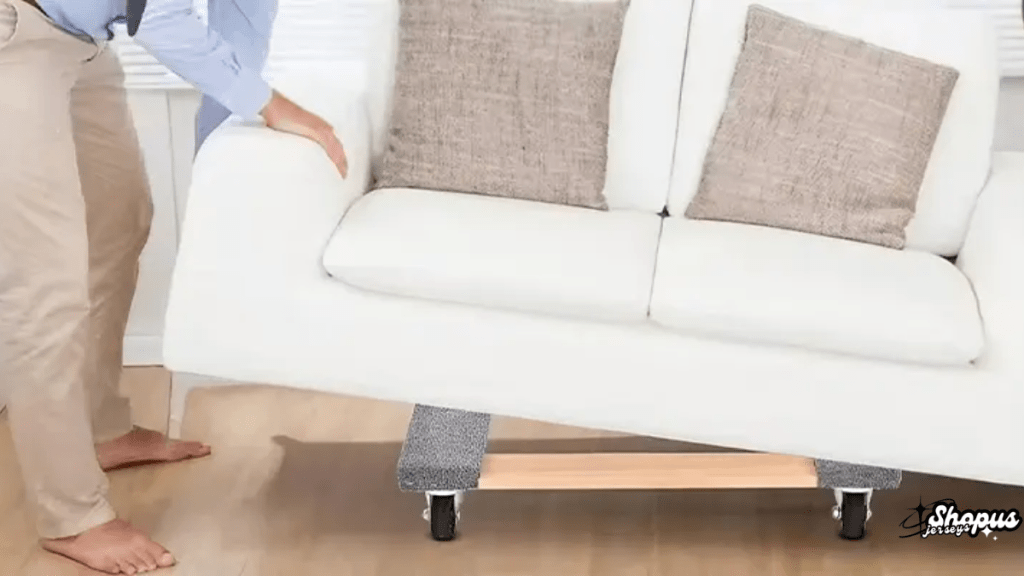Table of Contents
Moving heavy furniture can be challenging, especially when the furniture dolly you’re using is loud and disruptive. Why are furniture dollys loud? You’re not alone if you’ve ever wondered this while moving items around. A loud furniture dolly can be distracting, frustrating, and even alarming if you try to keep the noise down. In this article, we’ll break down the reasons behind the noise and how to minimize it for a smoother, quieter move.
Why Are Furniture Dollys Loud?

Furniture dollies are essential tools for moving, but sometimes they can make more noise than expected. But why are furniture dollys loud? Several factors contribute to this problem, including wheel material, surface type, and load weight. Understanding the cause of the noise can help you take steps to quiet your dolly and make moving less stressful.
The Role of Wheel Material in Furniture Dolly Noise
One of the most common reasons furniture dollys are loud is the material of the wheels. Many dollies come with plastic or hard rubber wheels, which can cause noise, especially on hard surfaces like tiles, wood, or concrete.
- Plastic Wheels: Plastic wheels are often noisy because they lack the softness to absorb sound. When these wheels move over solid floors, they create a loud, rattling noise.
- Rubber Wheels: While some dollies use rubber wheels, not all rubber wheels are quiet. Hard rubber can still cause significant noise, but softer rubber can absorb some of the sound, making it a better option for quieter movement.
Choosing a dolly with softer rubber or urethane wheels can reduce the noise. Softer wheels create less friction and offer a smoother roll, especially on solid surfaces, reducing the overall noise level.
Load Weight and Dolly Noise
Another factor behind the question of why furniture dollys are loud is the weight of the load. The heavier the load, the more pressure there is on the wheels, which can increase the sound they produce.
- Heavy loads increase friction. When moving a heavy object, the wheels press harder against the floor, creating more friction. This can lead to louder sounds, especially if the wheels are not designed to carry high weights.
- Impact on Wheel Wear and Tear: Heavy loads can also wear down the wheels over time, leading to even more noise as the wheels struggle to move smoothly. Regular maintenance or choosing a dolly designed for heavy loads can help.
Balancing the load and ensuring it’s evenly distributed can also help reduce noise, as uneven weight can lead to wobbling and extra sound.
Surface Type Matters: Hard vs. Soft Floors

The type of surface you’re moving your dolly on is another significant factor. Hard floors, like tile, wood, and concrete, are unforgiving when it comes to noise. They amplify any sound from the dolly’s wheels. On the other hand, softer surfaces, like carpets, help to absorb sound.
- Tile and Wood: These surfaces tend to amplify the sound of wheels, especially if they are plastic or hard rubber. They also make it harder for the wheels to glide smoothly, causing more rattling and noise.
- Concrete: Moving a dolly on concrete can be very loud due to the roughness of the surface. The friction between the rough surface and hard wheels often produces loud noises.
Consider temporarily placing rugs or carpets on your moving path to minimize noise on hard floors. They can act as noise buffers, helping reduce the sound the dolly produces.
Loose Parts and Dolly Noise
Another reason why furniture dollys are loud could be loose parts. Over time, screws, bolts, and other components on the dolly can become loose, leading to rattling sounds.
- Checking for Loose Parts: Regularly inspect your dolly to ensure everything is securely fastened. A quick tightening of loose screws or bolts can make a noticeable difference in noise.
- Adding Washers for Stability: If you notice any wobbling or rattling, adding washers can help stabilize the dolly. This minor adjustment can reduce shaking and noise, giving you a smoother, quieter moving experience.
Proper maintenance reduces noise and extends the lifespan of your dolly, saving you money in the long run.
Quick Fixes to Reduce Dolly Noise
If you’re struggling with a loud dolly, here are some quick and easy fixes to help quiet things down:
- Add a Rubber Mat: Placing a rubber mat on the dolly’s platform can reduce vibrations and prevent rattling sounds. It also helps to cushion the load, reducing overall noise.
- Use Soft Padding: Adding padding to your items before placing them on the dolly can help absorb sound. Even a simple blanket can make a difference.
- Invest in Noise-Reducing Wheels: If your dolly allows for wheel replacement, consider investing in high-quality, noise-reducing wheels made from softer rubber or urethane. These materials are designed to reduce sound and improve smoothness.
- Inspect and Maintain Regularly: Regular maintenance checks can prevent small issues from becoming big problems. Tighten loose parts, clean the wheels, and check for wear and tear to keep your dolly as quiet as possible.
How to Choose a Quieter Furniture Dolly
Investing in a dolly designed for quiet use is a smart option if you want to avoid the noise altogether. Here are some features to look for:
- Soft Wheels: Choose dollies with soft rubber or polyurethane wheels specifically designed to reduce noise on hard surfaces.
- Weight Capacity: Choose a dolly with a weight capacity that matches your needs. Overloading a dolly not meant for heavy items can lead to excessive noise and damage.
- Smooth Bearings: Good quality bearings ensure the wheels roll smoothly, reducing noise and friction.
By choosing a dolly with these features, you can avoid loud noises during your next move and enjoy a smoother, more peaceful experience.
Also read: Furniture Dolly Sounds Too Loud? Here’s What Causes the Noise.
Now that you know why furniture dollys are loud and how to reduce the noise moving doesn’t have to be noisy. Several factors influence how loud a dolly can be, from wheel materials and load weight to floor types and maintenance. Taking steps like choosing soft wheels, balancing your load, and maintaining your dolly can make a big difference. With a quieter dolly, your next move can be more enjoyable, allowing you to focus on the task rather than the noise.






